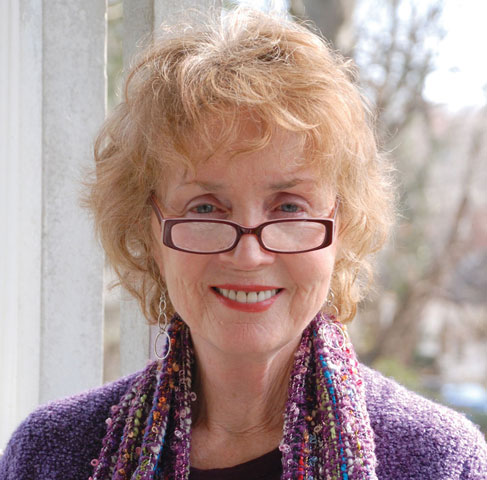
Lee Smith
 DIMESTORE: A WRITER'S LIFE
DIMESTORE: A WRITER'S LIFE
By Lee Smith
Published by Algonquin Books, 224 pages, $24.95
Before Lee Smith became a writer, she was an avid reader, encouraged by her mother, who read to her from babyhood. Smith developed wide-ranging tastes in books, although she says she didn't read casually or for information. She read to feel "all wild and trembly inside."
Two subjects especially inspired her -- horses and saints. In the 1940s and '50s in Grundy, Va., she had numerous occasions to see people riding horses. But Smith's fascination for them came mainly from books.
She enjoyed reading the Black Stallion books as well as those by Marguerite Henry. When she learned that Henry had stayed at her grandmother's boarding house while she was writing Misty, Smith was captivated.
Smith, however, considers St. Joan of Arc her all-time favorite. Not only did Smith love Joan of Arc, she says, she wanted to "be her." The desire was influenced mostly by a biography of Joan with a frontispiece illustration of the saint as she knelt and "prayed without ceasing for guidance from God."
Although Smith -- raised Methodist and Episcopalian -- was inspired by Joan and participated in religious revivals, she didn't become a saint or even a nun. She became a bestselling writer.
Dimestore: A Writer's Life is her 20th book. In the 15 essays collected here, Smith reminisces about her childhood spent in a country town known for its mountains and coal-mining.
She includes essays about her dad's dime store that later became a Wal-Mart; her mom as a homemaker and inspiration; her parents' mental health problems; and Appalachian culture. She reminisces about her years as a student in high school and at Hollins College, and later as a teacher. The essays have a lighthearted, engaging, but sometimes facile tone.
The best essay, however, was probably the most difficult to write. Here, Smith mourns the death of her son Josh, who was mentally ill. Weaving past and present, she describes the moment she scatters his ashes into the ocean and watches them disappear in a "puff of smoke." The essay ends quietly and powerfully.
 THE VIOLET HOUR: GREAT WRITERS AT THE END
THE VIOLET HOUR: GREAT WRITERS AT THE END
By Katie Roiphe
Published by The Dial Press, 320 pages, $28
Although he wrote sexually rambunctious novels, John Updike was a believer. But as Katie Roiphe explains in her latest book, The Violet Hour, Updike -- philanderer that he was -- had a relationship to religion that was as intense and troubled as his relationships to most everything else.
After Updike's death from lung cancer, his son noted that it was hard to see how anyone so intelligent could believe in God. But Updike did believe.
It may have helped his son's understanding if he had looked at his father's creative side -- especially his final collection of poems. In these, Roiphe says, he seems to be "broadening out into the cool universe; he is working toward grace."
A collection of six essays, The Violet Hour focuses on six writers and the ways they dealt with death. Although the subject is a difficult one and could be depressing under less skillful hands, The Violet Hour is an engaging and insightful read.
Credit goes to Roiphe's subjects -- award-winning writers who were not regarded as particularly religious until they lay dying: Susan Sontag, Sigmund Freud, John Updike, Dylan Thomas, Maurice Sendak and James Salter. (The Salter chapter doesn't quite fit here as it records a conversation about death that Roiphe had with him.)
Early on, Sontag (a Gerard Manley Hopkins fan) taught the philosophy of religion at Columbia University, but her religious sensibilities seemed to wane as she focused more on herself as celebrity. Yet on her deathbed, she asked to say the "Our Father."
Freud wasn't a believer, yet at death, he wrote a letter playfully telling a friend he would meet her on the Elysian Fields.
The Irish Catholic poet Thomas, a womanizer and drinker, had little interest in religious matters. But he wrote poems, Roiphe says, "praising God and the beauty of the earth."
The best essay here highlights children's author and illustrator Sendak, whose lifelong fear of death may be seen in books like Where the Wild Things Are and In the Night Kitchen. Although Sendak didn't believe in God, he did believe in an afterlife where he would be reunited with his brother and sister. Toward the end of his life, Sendak voraciously read William Blake, a mystic and creative visionary -- perhaps to prepare himself for things to come.
 IN A DIFFERENT KEY: THE STORY OF AUTISM
IN A DIFFERENT KEY: THE STORY OF AUTISM
By John Donvan and Caren Zucker
Published by The Crown Publishing Group, 688 pages, $30
The story of autism began hundreds of years ago when people with autistic-like symptoms were called holy fools and sometimes saints. Later, in the 17th and 18th centuries, people who made strange movements and sounds were considered witches and burned at the stake. Some were put in a confined space known as an idiot's cage.
More recently, people who exhibited unusual behaviors were placed in institutions. These behaviors included the inability to tolerate even slight changes in routine; an emotional indifference to others; a preference for repetitive motions; and an inability to communicate their feelings and to grasp the feelings of others.
John Donvan and Caren Zucker's compelling book, In a Different Key, focuses on the recent history of autism in the United States. The authors build their story around a little boy named Donald Triplett.
In the early 1930s, Donald displayed the "constellation of behaviors" that was later termed autism but at the time had no name or diagnosis. His parents insisted on getting help from Dr. Leo Kanner, a world-renowned child psychiatrist from Johns Hopkins University. Studying Donald and 11 other children, Kanner came up with the name, autism, and its diagnosis.
In these early cases of autism, the condition was considered something caused by "refrigerator mothers." Later, some blamed vaccines. Now, autism is believed to be caused by a genetic predisposition combined with environmental factors.
The book covers campaigns to promote autism awareness and acceptance, as well as efforts to understand the cause of the syndrome, whose effects vary widely, with some people able to function well and others severely disabled.
The book is long. It zigzags through various places and times. There are major players and minor players, and sometimes the minor players turn out to be major, as in the young man with mild autism who argued convincingly that the syndrome should not be cured, or the 11-year-old girl with autism who played a duet on a Broadway stage and brought down the house.
But happy surprises like those are rare in this book, whose bottom line is that even after nearly 80 years of scientific research, no one knows what autism is or what causes it.
[Diane Scharper is the author of several books, including Radiant, Prayer Poems.]




